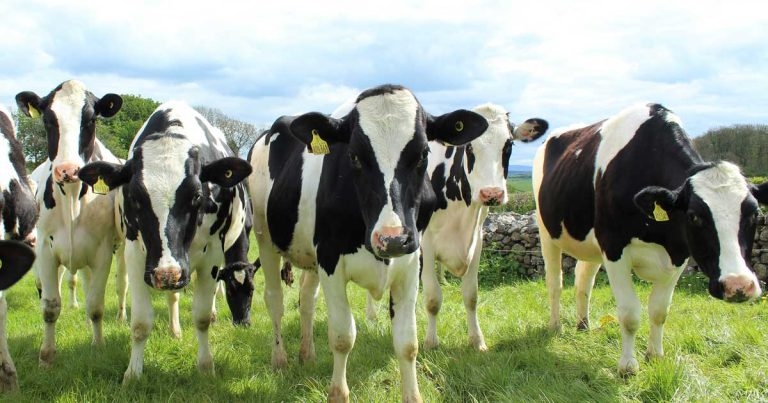14 Oct 2025
Work to reduce methane emissions from livestock was highlighted at the annual BCVA Congress in Edinburgh.

Cows can offer “one of the solutions” to climate change through the work of a major livestock genetics project, a Cumbria-based vet has argued.
The Paragon Veterinary Group, which operates four practices in the county, is part of the Cool Cows partnership that aims to breed new generations of methane-efficient cattle.
The project, which also includes the SRUC and genetic firm Semex, announced the birth of its first IVF-born calf earlier this year and hopes to secure significant reductions in methane emissions by 2030.
Paragon vet Emma Stuart told the BCVA Congress in Edinburgh the sector had “a responsibility to show that we’re trying to do something” on the issue.
Although methane remains in the atmosphere for a much shorter period than carbon dioxide, it is known to warm the planet far more rapidly.
But Dr Stuart argued that reducing methane could reduce feed requirements and promote efficiency, as well as addressing environmental concerns.
She said: “If we can remove methane from the system, we can actively cool the planet. Cows can be one of the solutions to climate change.”
Critics of the livestock industry have increasingly pointed to its environmental impact as a reason to move away from meat production to plant-based diets for both humans and pets including dogs and cats, despite enduring unease from some veterinary groups.
But amid current estimates that the world’s population could reach 10 billion by 2050, Dr Stuart told delegates: “We’re not going to get rid of cows. We need to feed a growing population.”
Elsewhere, BCVA board member Nicky Bowden also emphasised progress was being made in the area during a wider presentation on reducing the industry’s emissions.
But she warned it was “absolutely key” to have both robust data and action plans in order to influence wider policy debates.
She said: “If we haven’t got good data to defend our industry, and to have conversations with the people that are designing policies, we do risk assumptions being made about the industry that we’re all working in and then we end up with very blunt, poorly designed legislation coming in on top of us.”